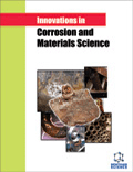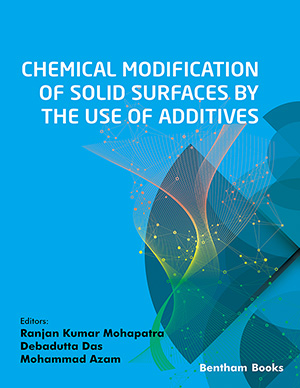[1]
S. Zou, X. Li, C. Dong, K. Ding, and K. Xiao, "Electrochemical migration, whisker formation, and corrosion behavior of printed circuit board under wet H2S environment", Electrochim. Acta, vol. 114, pp. 363-371, 2013.
[2]
D. Minzari, Jellesen, Morten S., Møller, Per, et al, "On the electrochemical
migration mechanism of tin in electronics, vol. vol 53. Corrosion Science, 2011, pp. 3366-3379.
[3]
T. Takemoto, R.M. Latanision, T.W. Eagar, and A. Matsunawa, "Electrochemical migration tests of solder alloys in pure water", Corros. Sci., vol. 39, pp. 1415-1430, 1997.
[4]
B. Medgyes, B. Horváth, B. Illés, T. Shinohara, A. Tahara, and G. Harsányi, "Microstructure and elemental composition of electrochemically formed dendrites on lead-free micro-alloyed low Ag solder alloys used in electronics", Corros. Sci., vol. 92, pp. 43-47, 2015.
[5]
X. Zhong, L. Chen, J. Hu, Y. Shi, Z. Zhang, and D. Zeng, "In situ study of the electrochemical migration of tin under bipolar square wave voltage", J. Electrochem. Soc., vol. 164, pp. D342-D347, 2017.
[6]
X. Zhong, S. Yu, L. Chen, J. Hu, and Z. Zhang, "Test methods for electrochemical migration: a review", J. Mater. Sci. Mater. Electron., vol. 28, pp. 2279-2289, 2017.
[7]
Q. Xiao, F. Grunwald, and K. Carlson, "Surface leakage current (SLC) methodology for electrochemical migration evaluation", Circuit World, vol. 23, pp. 6-10, 1997.
[8]
X. Zhong, L. Chen, B. Medgyes, Z. Zhang, S. Gao, and L. Jakab, "Electrochemical migration of Sn and Sn solder alloys: a review", RSC Advances, vol. 7, pp. 28186-28206, 2017.
[9]
H. Conseil, V. Verdingovas, M.S. Jellesen, and R. Ambat, "Decomposition of no-clean solder flux systems and their effects on the corrosion reliability of electronics", J. Mater. Sci. Mater. Electron., vol. 27, pp. 23-32, 2016.
[10]
D-X. Xu, "Experimental Wettability Study of Lead-Free Solder on Cu Substrates Using Varying Flux and Temperature", J. Electron. Mater., vol. 37, pp. 125-133, 2007.
[11]
M.S. Jellesen, Minzari, Daniel, Rathinavelu, Umadevi, et al, "Corrosion
failure due to flux residues in an electronic add-on device., vol. vol 17. Engineering Failure Analysis, 2010, pp. 1263-1272.
[12]
D. Li, P.P. Conway, and C. Liu, "Corrosion characterization of tin–lead and lead free solders in 3.5wt.% NaCl solution", Corros. Sci., vol. 50, pp. 995-1004, 2008.
[13]
V. Verdingovas, M.S. Jellesen, and R. Ambat, "Solder flux residues and humidity-related failures in electronics: relative effects of weak organic acids used in no-clean flux systems", J. Electron. Mater., vol. 44, pp. 1116-1127, 2015.
[14]
V. Verdingovas, M.S. Jellesen, and R. Ambat, "Influence of sodium chloride and weak organic acids (flux residues) on electrochemical migration of tin on surface mount chip components", Corros. Eng. Sci. Technol., vol. 48, pp. 426-435, 2013.
[15]
S. Sengupta, M. Perez, A. Rabkin, and Y. Golan, "In situ monitoring the role of citrate in chemical bath deposition of PbS thin films", CrystEngComm, vol. 18, pp. 149-156, 2016.
[16]
J. Winiarski, W. Tylus, K. Winiarska, and B. Szczygieł, "The influence of molybdenum on the corrosion resistance of ternary Zn–Co–Mo alloy coatings deposited from citrate–sulphate bath", Corros. Sci., vol. 91, pp. 330-340, 2015.
[17]
B. Liao, Z. Chen, Y. Qiu, G. Zhang, and X. Guo, "Effect of citrate ions on the electrochemical migration of tin in thin electrolyte layer containing chloride ions", Corros. Sci., vol. 112, pp. 393-401, 2016.
[18]
B.A. Smith, and L.J. Turbini, "Characterizing the weak organic acids used in low solids fluxes", J. Electron. Mater., vol. 28, pp. 1299-1306, 1999.
[19]
H. Conseil, V. Verdingovas, M.S. Jellesen, and R. Ambat, "Decomposition of no-clean solder flux systems and their effects on the corrosion reliability of electronics", J. Mater. Sci. Mater. Electron., vol. 27, pp. 23-32, 2015.
[20]
X. Zhong, Z. Guoan, and Q. Yubing, "In situ study the dependence of electrochemical migration of tin on chloride", Electrochem. Commun., vol. 27, pp. 63-68, 2013.
[21]
X. Zhong, "Test methods for electrochemical migration: a review", J. Mater. Sci. Mater. Electron., vol. 28, pp. 2279-2289, 2016.
[22]
B. Liao, Z. Chen, Q. Qiu, and X. Guo, "Inhibitory effect of cetyltrimethylammonium bromide on the electrochemical migration of tin in thin electrolyte layers containing chloride ions", Corros. Sci., vol. 118, pp. 190-201, 2017.
[23]
X. Zhong, G. Zhang, and X. Guo, "The effect of electrolyte layer thickness on electrochemical migration of tin", Corros. Sci., vol. 96, pp. 1-5, 2015.
[24]
O. Devos, C. Gabrielli, and L. Beitone, "Growth of electrolytic copper dendrites. II: Oxalic acid medium", J. Electroanal. Chem. , vol. 606, pp. 85-94, 2007.
[25]
S.J. Huo, J.M. He, L.H. Chen, and J.H. Fang, "Adsorption configuration of sodium 2-quinoxalinecarboxylate on iron substrate: Investigation by in situ SERS, XPS and theoretical calculation", Spectrochim. Acta A Mol. Biomol. Spectrosc., vol. 156, pp. 123-130, 2016.
[26]
L. Zhen, X.W. Shu, S. Qiao, H. Zhao, L. Hao, B.L. Min, Z. Cheng, W. Xiao, S. Dou, and L. Max, "Ultrasmall manganese ferrite nanoparticles as positive contrast agent for magnetic resonance imaging", Adv. Healthc. Mater., vol. 2, pp. 958-964, 2013.
[27]
J.C. Dupin, G. Danielle, and V. Philippe, "Systematic XPS studies of metal oxides, hydroxides and peroxides", Phys. Chem. Chem. Phys., vol. 2, pp. 1319-1324, 2000.
[28]
S. Stankovich, R.D. Piner, X. Chen, N. Wu, S.T. Nguyen, and R.S. Ruoff, "Stable aqueous dispersions of graphitic nanoplatelets via the reduction of exfoliated graphite oxide in the presence of poly (sodium 4-styrenesulfonate)", J. Mater. Chem., vol. 16, pp. 155-158, 2006.
[29]
T-H. Tsai, and Y-F. Wu, "Organic acid mixing to improve ITO film etching in flat panel display manufacturing", J. Electrochem. Soc., vol. 153, p. C86, 2006.
[30]
H. Song, Son, Su-Young, Kim, Seul Ki, et al, "A facile synthesis of
hierarchical Sn3O4 nanostructures in an acidic aqueous solution
and their strong visible-light-driven photocatalytic activity, vol. vol 8. Nano Research, 2015, pp. 3553-3561.
[31]
A. Palacios-Padrós, M. Altomare, K. Lee, I. Díez-Pérez, F. Sanz, and P. Schmuki, "Controlled Thermal Annealing Tunes the Photoelectrochemical Properties of Nanochanneled Tin-Oxide Structures", ChemElectroChem, vol. 1, pp. 1133-1137, 2014.
[32]
J. Long, X. Weiwei, and X. Xiuqiang, "Sn2+ dopant induced visible-light activity of SnO2 nanoparticles for H2 production", Catal. Commun., vol. 16, pp. 215-219, 2011.
[33]
M. Wang, Y. Liu, D. Zhang, and H. Yang, "Anodization process of Sn in oxalic acid at low applied voltages", Electrochim. Acta, vol. 59, pp. 441-448, 2012.
[34]
X. Zhong, G. Zhang, Y. Qiu, Z. Chen, and X. Guo, "Electrochemical migration of tin in thin electrolyte layer containing chloride ions", Corros. Sci., vol. 74, pp. 71-82, 2013.
[35]
X. Zhong, G. Zhang, Y. Qiu, Z. Chen, W. Zou, and X. Guo, "In situ study the dependence of electrochemical migration of tin on chloride", Electrochem. Commun., vol. 27, pp. 63-68, 2013.
[36]
X. Zhong, Z. Guoan, and Q. Yubing, "Electrochemical migration of tin in thin electrolyte layer containing chloride ions", Corros. Sci., vol. 74, pp. 71-82, 2013.
[37]
S. Ramakrishnan, S. Janjam, U.B. Patri, D. Roy, and S.V. Babu, "Comparison of dicarboxylic acids as complexing agents for abrasive-free chemical mechanical planarization of copper", Microelectron. Eng., vol. 84, pp. 80-86, 2007.
[38]
S.O. Lee, T. Tran, B.H. Jung, S.J. Kim, and M.J. Kim, "Dissolution of iron oxide using oxalic acid", Hydrometallurgy, vol. 87, pp. 91-99, 2007.
[39]
V.K. Gouda, E.N. Rizkalla, and S. Abd-El-Wahab, "Corrosion behaviour in organic acid solutions - I. Tin electrode", Corros. Sci., vol. 21, pp. 1-15, 1981.
[40]
R.C. Weast, M.J. Astle, W.H. Beyer, Eds., CRC handbook of
chemistry and physics.Boca Raton, FL: CRC press, 1988.
[41]
J.C. Bradley, S. Dengra, and G.A. Gonzalez, "Ion transport and deposit growth in spatially coupled bipolar electrochemistry", J. Electroanal. Chem. , vol. 478, pp. 128-139, 1999.
[42]
H. Kazimierczak, P. Ozga, M. Słupska, Z. Świątek, and K. Berent, "Electrodeposition of Sn-Mn layers from aqueous citrate electrolytes", J. Electrochem. Soc., vol. 161, pp. D309-D320, 2014.
[43]
N. Eliaz, and E. Gileadi, "Induced codeposition of alloys of tungsten, molybdenum and rhenium with transition metals", In: Modern aspects of electrochemistry., Springer, 2008, pp. 191-301.
[44]
G.W. Warren, P. Wynblatt, and M. Zamanzadeh, "The role of electrochemical migration and moisture adsorption on the reliability of metallized ceramic substrates", J. Electron. Mater., vol. 18, pp. 339-353, 1989.
 14
14 2
2 1
1 1
1







